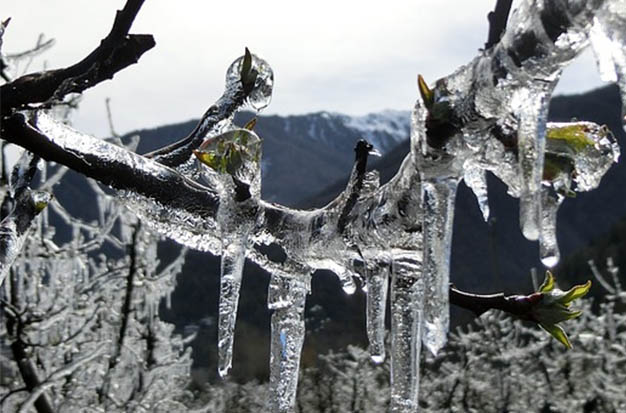Ice wine (Eiswein), is a type of ultra-rich, incredibly sweet dessert wine, that is created from the concentrated liquid of grapes that have been frozen on the vine. Although Canada is one of the world’s top producing nations, the practice of manufacturing ice wine (also known as eiswein regionally) is deeply ingrained in Austria and Germany. The specialized wine costs more to manufacture and is only available in half-size bottles. It has flavors of sweet fruits and honey and has a lower alcohol content than most wines, like many dessert varietals.
Fast Facts
- Regions: Canada, Germany, Austria, U.S. (Finger Lakes, Upper Midwest), China
- Origin: Germany
- Sweetness: Very sweet
- Color: Light gold to pink
- ABV: 7–12%
What Ice Wine Tastes Like
Ice wine is a sweet dessert wine, which frequently features citrus and tropical fruit flavors, honey, and marmalade. It’s one of the sweetest wines you’ll discover, yet the extreme sweetness is countered by a lot of fresh acidities. White grape ice wine still tastes crisp despite having powerful notes of honey, citrus, stone fruit like peach, and dried apricot, as well as juicy tropical fruits like mango. Strawberry and subtle spice flavors can be found in red grape ice wine. Both wines often have a low tannin content and might have a flowery scent and a long, silky sweet finish.
Depending on the grape varieties utilized and the processing, the precise features of ice wine will vary substantially. Some ice wines undergo oak barrel aging, which adds another level of complexity.
How to Make Ice Wine

In the course of the winter, the grapes’ water will eventually freeze if they are left on the vine. These frozen grapes are swiftly harvested and pressed into juice, which has a high sugar content and is subsequently turned into wine, which is luscious and sweet. In December or January when it is bitterly cold, the fruit is often collected in the middle of the night. After that, the frozen grapes are squeezed to extract the juice before going through the fermentation process.
Riesling, Vidal Blanc, Gewürztraminer, Grüner Veltliner, and Cabernet Franc are the grapes most frequently used to make ice wine. These grapes have greater levels of acidity, making the finished product pleasant and not too heavy or “sticky.” Depending on the type of wine grapes being used, different growing requirements apply; nonetheless, because the grapes are harvested while still frozen, the vines must be able to tolerate extremely low temperatures. Although there are light red variants, ice wines are mostly created in the style of white wine.
Where Is This Winemaking Method Used
Ice wine can only be produced in cooler temperate locations where frosts occur in the vineyard throughout the winter. This is because making ice wine requires working with nature—putting regular grapes in a freezer is viewed as cheating! One of the most popular winemaking techniques in Canada today, it has its roots in Germany and Austria.
It’s a race against time to harvest and press everything before the ice starts to thaw. The brutally cold weather gives the employees more time to transport the frozen fruit from the vine to the fermentation tank, which is why plucking grapes in the middle of the night actually makes a lot of sense. With all of this in mind, you can start to see why Ice Wine is regarded as a highly specialized and premium form of wine that can only be produced in select regions of the world.
How to Taste Wine
To guarantee you have the best experience when tasting wine, follow these steps:
- Look: Take a good look at the wine, examining the color and opacity through the glass.
- Smell: Give your glass a fast 10-second swirl before taking a whiff. Inhale deeply while placing your nose inside the wine glass to get a taste of the wine.
- Taste: Swirl it around your mouth after taking a short drink. When tasting something for the first time, take note of its acidity, sweetness, tannins, and alcohol concentration. Then go on to tasting notes (berries, spice, oak), and finally the finish.
Food Pairings
Ice wine tastes great when enjoyed as a sweet drink on its own and can even be coupled with some items that are normally eaten as a meal’s finale. Pair it with simple vanilla sweets like yogurt panna cotta, sour cream pound cake, or ice cream, or with a soft cheese like mild goat cheese or brie.
Instead of the usual wine pour of four ounces, serve ice wine in a tiny white wine glass or tumbler. The ideal serving temperature is 50 to 55 F, so place the bottle in the refrigerator approximately an hour beforehand.
Key Producers, Brands, and Buying Tips
The overall production of ice wines is far lower than that of table wines because frozen grapes produce such small amounts of liquid. A warm winter can often prevent a region from producing any ice wine at all. As a result, exceptional ice wines from Canada sometimes cost over $100 for a 375 mL bottle.
Although you won’t often find ice wine at supermarkets or liquor stores, a decent wine shop might have a few bottles. Buying it from a store, an internet vendor, or the winery itself is all perfectly acceptable. Though the outcomes are not as impressive as those produced from naturally frozen grapes, some winemakers are artificially freezing grapes after harvest to mimic the process of generating ice wines. Instead of being called ice wine or eiswein, these wines are often referred to as “iced wine.” Try another premium white dessert wine if you can’t get ice wine.
When shopping for ice wine, these brands produce high-quality options and are widely available:
- Inniskillin
- Weingut Markus Huber
- Peller Estates
- Hunt County Vineyards
- Matteo
- Kiona
- Riverview Cellars Estate
- Chateau Ste. Michelle
- Dr. Loosen
- Casa Larga
FAQ
How Exactly Do Frozen Grapes Result in Higher Sugar Levels?
Instead of receiving mushy grape juice if the frozen grapes are picked and crushed right away before they have a chance to defrost, you will receive chunks of fruit and ice crystals. The winemaker will be left with cold grape pieces that have almost no water if the ice crystals can be swiftly removed, which means the sugar percentage will be very high.
Why Is Ice Wine Expensive?
In general, Ice Wine is more expensive per bottle than regular wine. Depending on where the wine is made, an average bottle of Ice Wine might cost anywhere from $30 to $50.
The cost of manufacturing Ice Wine is more than most traditional wines since the wine-making process is so challenging and necessitates harvesting at very specific times, which expense is then passed on to the consumer. In addition to harvest concerns, using frozen grapes results in far larger quantities of grapes being needed to make the same amount of wine. For an Ice Wine to be produced, about 4-5 times as many grapes are needed as for a typical bottle of wine. Additionally, each grape is hand-selected to guarantee that it is in the greatest possible shape to produce the finest wine.
Due to the difficult procedure and the fact that there is currently a small market for Ice Wine, the wineries must charge a premium in order for it to be profitable. But if you want to try something a bit different and are searching for a terrific dessert wine, pick up a bottle of genuine ice wine and give it a shot.


